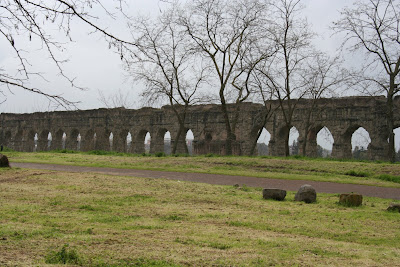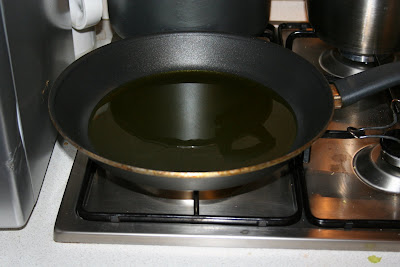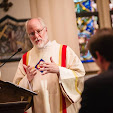
We are back from a whirlwind trip to parts south, following immediately on the heels of Culture Week here in Rome.
Culture Week is a week-long celebration of Italian culture that happens every year. All week long, museums and other cultural places and events are free, and special exhibits, tours and shows are put on. We did our best to take advantage of the free-ness and the extra opportunities, despite the fact that there is NO PUBLICITY about this. We were able to find exactly one brochure online (a pdf of the only brochure I ever saw in person) that listed events, and there was not a single sign anywhere in this city. I guess they don't want people going too crazy for the free-ness of it all, and they certainly don't want the tourists hearing about it.
Well, here's a quick rundown of the things some or all of us did (for free!) to celebrate Culture Week:
* an excellent English language tour of the Capitoline Museums of antiquities (where we saw, among other things, the original Etruscan she-wolf statue that has become the symbol of the city of Rome -- after little baby Romulus and Remus were added thousands of years later);

*an excellent Italian language tour, by the exact same guide and in a cold rainy wind, of 5 or 6 of the aqueducts just outside town;

*a visit to the Museum of Rome in Trastevere, which had lots of interesting photos of Trastevere (our neighborhood) over the last century and a terrific collection of really fabulous watercolors of Rome at the turn of the 20th century by a man named Ettore Roesler Franz;
*a guided tour of the "secret" gardens at the Borghese Gallery (given in Italian by a woman named Beth from Ohio);
*a visit to the optical illusion collonade created by the architect Borromini (it's actually 12 meters long but looks very convincingly 35 meters -- very cool);
*a visit to the Balbi Crypt, which shows the development of a Rome neighborhood from ancient to modern times;
*a visit to Castel Sant'Angelo, the pope's personal castle, after a climb with our Baltimore friends Ben and Harry Chello and Laurie Feinberg to the top of the dome of St. Peter's (which didn't count for culture week because it wasn't free, but was still way cool on a crystal clear day);


* a nighttime visit to the Capitoline Museum to sketch; and
* a (very late!) nighttime visit to the Ara Pacis, Emperor Augustus' Altar of Peace.

This was all in only 4 days, because we then left with the students for a trip to Naples, Pompeii and Sorrento, where we got into other things for free with the whole group. I'll let somebody else tell you about that great trip.

So, just thought you'd like to know that despite the disastrous fall of the dollar, we're getting our money's worth here -- or at least we did last week! Now I need to go to bed to recover.
-- Maureen




 * a nighttime visit to the Capitoline Museum to sketch; and
* a nighttime visit to the Capitoline Museum to sketch; and
 So, just thought you'd like to know that despite the disastrous fall of the dollar, we're getting our money's worth here -- or at least we did last week! Now I need to go to bed to recover.
So, just thought you'd like to know that despite the disastrous fall of the dollar, we're getting our money's worth here -- or at least we did last week! Now I need to go to bed to recover.


 We were seated behind the High Altar, so our view was less than ideal. But we were quite close and could see the Pope (from behind) very well during the liturgy of the Eucharist.
We were seated behind the High Altar, so our view was less than ideal. But we were quite close and could see the Pope (from behind) very well during the liturgy of the Eucharist.



 It was a small crowd of less than 20 and we sang psalms and scripture, included the Lamentations of Jeremiah (a traditional part of Tenebrae). A bit of a capella chanting in a simple early medieval church is a perfect way to set the tone for Good Friday.
It was a small crowd of less than 20 and we sang psalms and scripture, included the Lamentations of Jeremiah (a traditional part of Tenebrae). A bit of a capella chanting in a simple early medieval church is a perfect way to set the tone for Good Friday. 
 Including a cool-gross statue of St. Bartholomew holding his own skin (he was flayed to death).
Including a cool-gross statue of St. Bartholomew holding his own skin (he was flayed to death). It still has its gothic baldichino over the high altar,
It still has its gothic baldichino over the high altar, and a 13th century apse mosaic.
and a 13th century apse mosaic.




 It's often hard to know what to make of such claims, but the devotion of the people there was certainly real, and who is to say that they are not genuine.
It's often hard to know what to make of such claims, but the devotion of the people there was certainly real, and who is to say that they are not genuine. We have been celebrating my thirteenth birthday for the past three days, so I will give you a quick description of each day.
We have been celebrating my thirteenth birthday for the past three days, so I will give you a quick description of each day. We celebrated on the 17th because I wanted to celebrate in Belgium with our friends there and we were leaving that afternoon. We celebrated with chocolate cake (made by my friend Bethany with a little help from me and her sister Lisa) and a couple small gifts (a block of belgian chocolate and a book on drawing flowers with the instructions in Flemish).
We celebrated on the 17th because I wanted to celebrate in Belgium with our friends there and we were leaving that afternoon. We celebrated with chocolate cake (made by my friend Bethany with a little help from me and her sister Lisa) and a couple small gifts (a block of belgian chocolate and a book on drawing flowers with the instructions in Flemish).




 (3) Heat a lot of oil in a pan, but don't let it get so hot that it smokes.
(3) Heat a lot of oil in a pan, but don't let it get so hot that it smokes.

 We finished the evening by staying up til midnight to watch The Matrix (which Denis and I had never seen before). Overall, my three birthdays were highly satisfactory.
We finished the evening by staying up til midnight to watch The Matrix (which Denis and I had never seen before). Overall, my three birthdays were highly satisfactory.
 It is always bittersweet for us to be in Leuven, because we love the place and the people so much, and for a while it was home for us. Denis, who was delighted with how much he remembered -- both of places and of his Dutch -- was having a hard time sorting out these happy/sad/wistful emotions one night, so we had a great conversation about the meaning of the word nostalgic.
It is always bittersweet for us to be in Leuven, because we love the place and the people so much, and for a while it was home for us. Denis, who was delighted with how much he remembered -- both of places and of his Dutch -- was having a hard time sorting out these happy/sad/wistful emotions one night, so we had a great conversation about the meaning of the word nostalgic.  as well as others who patiently allowed us to practice both our English and our Dutch with them as we caught up with each other. One highlight was an invitation to dinner from Molly and John Berger, the current residents of our old home at Begijnhof 19.
as well as others who patiently allowed us to practice both our English and our Dutch with them as we caught up with each other. One highlight was an invitation to dinner from Molly and John Berger, the current residents of our old home at Begijnhof 19.  We had a great time, though the children complained that the house had gotten smaller than it used to be.
We had a great time, though the children complained that the house had gotten smaller than it used to be.
 It even got Sophie to pick out the weapons she would take with her on her quest. She looks all pacifist and all, but keep you might want to keep your eye on her and see if you can see where she's hidden her dagger.
It even got Sophie to pick out the weapons she would take with her on her quest. She looks all pacifist and all, but keep you might want to keep your eye on her and see if you can see where she's hidden her dagger.  Nathan and Denis, of course, conquered the castle while we were there, so we knew we were in good hands.
Nathan and Denis, of course, conquered the castle while we were there, so we knew we were in good hands.
 was to spend a lovely time visiting the van Eyck masterpiece The Mystic Adoration of the Lamb altarpiece. It is truly one of the masterworks of the Flemish "Primitive" painters of the 15th century (from whom the Italians learned the technique of oil painting), and it is beyond my linguistic powers to describe. All I can say is, if you're ever in the neighborhood, definitely make the effort to see it. This portrayal of the heavenly garden has many amazing details, but our friend Bethany was most struck by how much the heavenly city in the background looks like Flanders. Go figger. Here are the children climbing into the laps of the van Eyck brothers outside the cathedral.
was to spend a lovely time visiting the van Eyck masterpiece The Mystic Adoration of the Lamb altarpiece. It is truly one of the masterworks of the Flemish "Primitive" painters of the 15th century (from whom the Italians learned the technique of oil painting), and it is beyond my linguistic powers to describe. All I can say is, if you're ever in the neighborhood, definitely make the effort to see it. This portrayal of the heavenly garden has many amazing details, but our friend Bethany was most struck by how much the heavenly city in the background looks like Flanders. Go figger. Here are the children climbing into the laps of the van Eyck brothers outside the cathedral.


 and we continued upon our return to Rome, where we had a great lunch at a local trattoria yesterday (the 18th).
and we continued upon our return to Rome, where we had a great lunch at a local trattoria yesterday (the 18th).  There is some confusion about which day actually counts as Sophie's birthday here, because she was born at 6:18 pm on March 18th in Baltimore, but with the time difference, that would be 12:18 am on March 19th here. Then Fritz starts to throw in daylight savings time, and things get really confused. Our solution is to keep celebrating, and we will have a special dinner of fresh pasta and fried zucchini flowers tonight just to make sure we cover our bases.
There is some confusion about which day actually counts as Sophie's birthday here, because she was born at 6:18 pm on March 18th in Baltimore, but with the time difference, that would be 12:18 am on March 19th here. Then Fritz starts to throw in daylight savings time, and things get really confused. Our solution is to keep celebrating, and we will have a special dinner of fresh pasta and fried zucchini flowers tonight just to make sure we cover our bases.